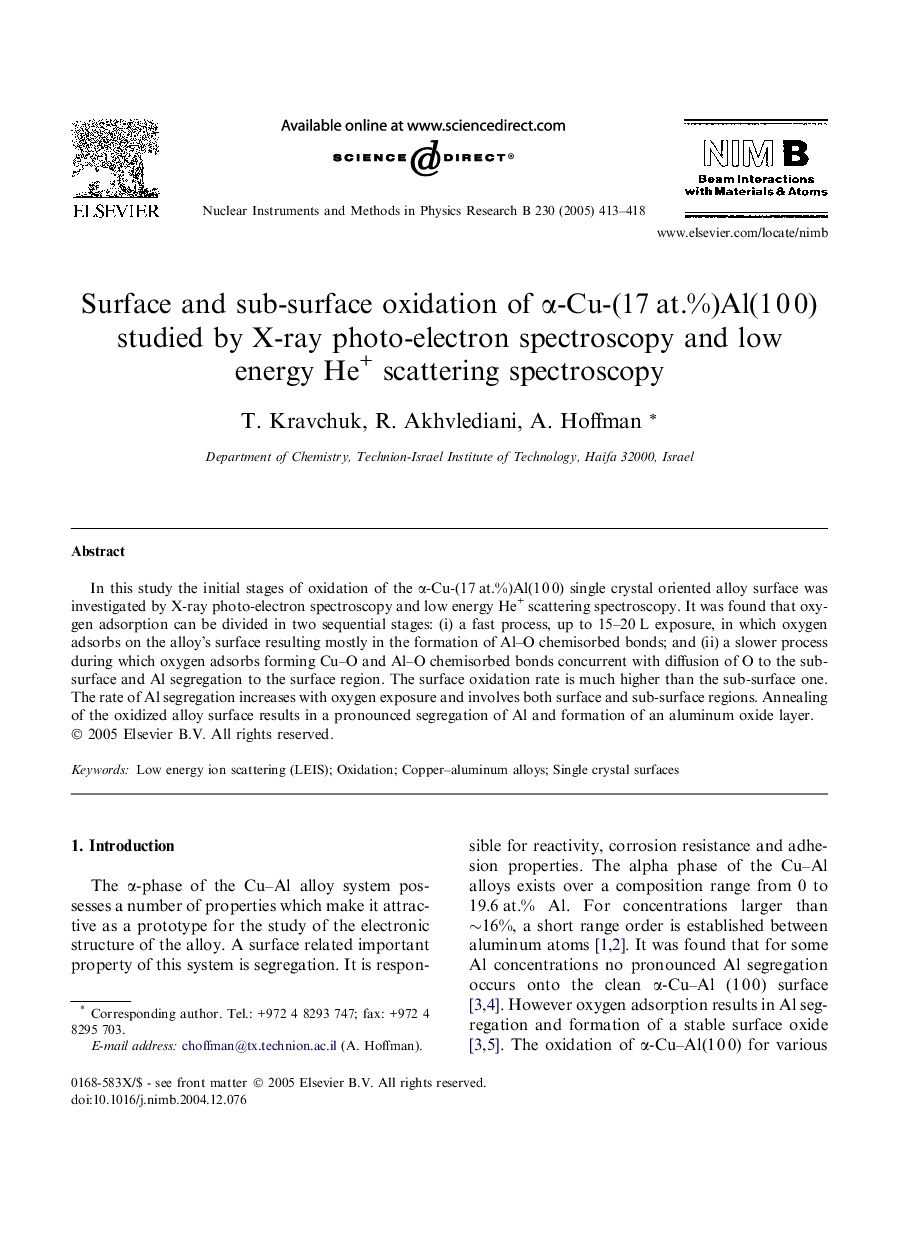| Article ID | Journal | Published Year | Pages | File Type |
|---|---|---|---|---|
| 9818315 | Nuclear Instruments and Methods in Physics Research Section B: Beam Interactions with Materials and Atoms | 2005 | 6 Pages |
Abstract
In this study the initial stages of oxidation of the α-Cu-(17 at.%)Al(1 0 0) single crystal oriented alloy surface was investigated by X-ray photo-electron spectroscopy and low energy He+ scattering spectroscopy. It was found that oxygen adsorption can be divided in two sequential stages: (i) a fast process, up to 15-20 L exposure, in which oxygen adsorbs on the alloy's surface resulting mostly in the formation of Al-O chemisorbed bonds; and (ii) a slower process during which oxygen adsorbs forming Cu-O and Al-O chemisorbed bonds concurrent with diffusion of O to the sub-surface and Al segregation to the surface region. The surface oxidation rate is much higher than the sub-surface one. The rate of Al segregation increases with oxygen exposure and involves both surface and sub-surface regions. Annealing of the oxidized alloy surface results in a pronounced segregation of Al and formation of an aluminum oxide layer.
Related Topics
Physical Sciences and Engineering
Materials Science
Surfaces, Coatings and Films
Authors
T. Kravchuk, R. Akhvlediani, A. Hoffman,
